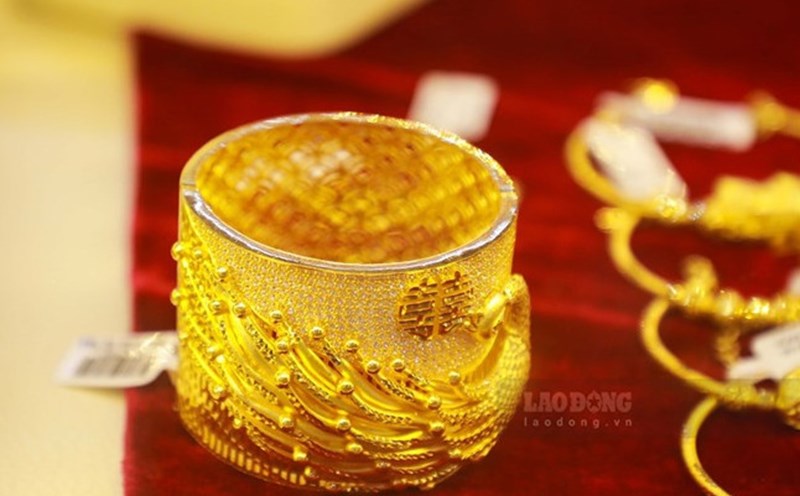According to the latest report from the World Gold Council (WGC), a new wave of economic risks is spreading, causing physical demand for gold to skyrocket and push gold prices to record highs, opening 2025 with the best results since 2016.
In the first three months of the year, total global gold demand reached 1,206 tons, up 1% over the same period last year.
In an interview with Kitco News, Mr. Joseph Cavatoni - senior strategist at WGC said that demand from individual investors, capital flow back to gold ETFs and gold purchases by central banks are the three main pillars supporting the market.
He said the US government's plan to impose new tariffs on global trade has caused a lot of uncertainty, forcing investors and central banks to reconsider how to balance risks in their portfolios. Both risk assets and public debt are making many people question the safety of US Treasury bonds.

Banks are no longer ready to take risks as before. US bonds are no longer the same as before. This has led many to find alternatives, and gold has become a good choice, said Mr. Cavatoni.
He also noted that demand for gold has spread more widely, both in the West and the East. The fact that gold prices remain high shows that buying momentum mainly comes from real demand, not just speculation.
Strong capital flow into gold ETFs
Previously, gold ETFs have received little attention, but since January this year, capital has returned strongly. According to the WGC, in the first quarter, global gold ETFs attracted 226.5 tons of gold - in complete contrast to the 113 tons net withdrawal in the same period last year.
At the same time, demand for gold bars and gold bars reached 325.4 tons, up 3% over last year.
A noteworthy point is that Asian investors, especially China, are participating more strongly, even surpassing capital flows into ETFs in North America in the past month.
"Although economic risks have cooled down, the uncertainty mentality cannot be erased immediately. Investors are looking beyond $3,000 an ounce they see gold as an essential part of a hedge portfolio, Cavatoni said.

Central banks continue to buy gold, despite slowing down
Total central bank gold purchases in the first quarter of 2025 were 243.7 tons - down 21% compared to 309.9 tons in the same period last year. However, this is still 24% higher than the average of the last 5 years, and only 9% lower than the average of the last three years.
The WGC believes that in the context of increasing geopolitical instability, gold will still be an important component of foreign exchange reserves of countries.
Demand for technology gold is stable, gold jewelry decreases sharply
Despite little attention, the technology sector also used 80.5 tonnes of gold in the first quarter, almost unchanged from last year. This is a sign that the demand for high-end consumer goods is still stable, partly reflecting that the global economic health is not too negative.
In contrast to other pillars, demand for gold jewelry has clearly weakened, reaching only 380.3 tons, down 21% over the same period, the lowest level since the 2020 pandemic. High gold prices have caused consumers to limit spending or switch to lighter products.
In China, the amount of gold jewelry consumed in the first quarter decreased by 35%.
However, Mr. Cavatoni believes that if gold prices stabilize again, jewelry demand may recover, because consumers are more concerned about volatility than high prices.
Total gold supply in the first quarter increased by 1% over the same period, reaching 1,206 tons. Of which, mining output reached a record high of 856 tons - the highest ever in WGC Q1 data (since 2000). Recycled gold volumes reached 345 tons, down slightly by 1%.











